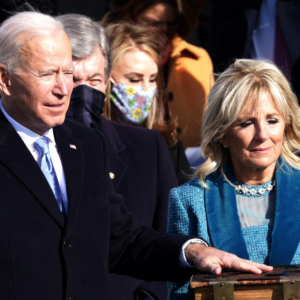I recently had the pleasure of moderating a Cornell Institute for Public Affairs and SC Johnson Graduate School of Management roundtable of ten students hailing from nine countries with Dr. Roberto Perli, founder and Partner at Cornerstone Macro. Dr. Perli, Italian-born and partially American-educated, was well equipped to field questions on topics ranging from the Federal Reserve (Fed), the European Central Bank (ECB), developing economies and emerging markets, tax and investment issues, to personal finance decisions.
The first interesting note, without directly quoting Dr. Perli, was his take on the Federal Open Market Committee (FOMC); Dr. Perli assisted the Federal Reserve Board of Governors and the FOMC from 2001-2010. The FOMC has quite obviously been considerably more active in the wake of the financial crisis, but Dr. Perli sees other changes as well. Under Federal Reserve Chairman Alan Greenspan, the FOMC was a one-man show – Greenspan would state his position and the committee would fall in line. According to Dr. Perli, Chairman Ben Bernanke is more diplomatic in his approach and listens to the other members before attempting to forge a consensus. Dr. Perli sees Janet Yellen, the newly appointed successor to Bernanke, to be somewhere in the middle in terms of democratic process, although perhaps slightly more like Greenspan in approach.
What is interesting here is that the transparency that is now embedded in the Fed and the FOMC. In a show of transparency, the minutes of the FOMC are now available online, which was not always the case. This is part of a greater sense of transparency at the Fed that has been pushed for by advocates, however there is still no record of how each Governor votes. This is an issue of process transparency: it allows those who care to monitor this sort of thing the ability to see how decisions are crafted and those of us interested in public administration find this sort of transparency to be integral to good governance. Dr. Perli, on the other hand, comes from a different background. He has a dual degree in economics and mathematics and a PhD in economics. As the founder of an investment research firm, he is concerned with outcome transparency. He, and others in his industry, simply want to know what the Fed is going to do. I was surprised to learn that even outcome transparency was not a concept at the Fed until recent decades. Outcome transparency, while necessary for full transparency, is not sufficient. The Fed needs to be implementing full process transparency, especially in tumultuous economic times such as today.
But all of this transparency is irrelevant if central banks have little power in shaping economic outcomes. The Fed has a dual mandate to ensure price stability and to reach “full employment.” I put quotes around the latter because there are two types of unemployment, frictional and structural, that a central bank has no control over. The Fed assumes these to total 6.5% and works to keep cyclical unemployment near zero so that the official unemployment rate, prior to other policy interventions, remains below seven percent. The ECB, along with the central banks of most developed economies, is only concerned with price stability, with full employment seen as a natural result of price stability. This means keeping inflation in-line with public expectations, usually somewhere around two or three percent, depending on the nation. Inflation is a good thing that keeps lending happening and keeps people spending money. Nobody wants deflation. Even with price stability as one of the two goals of the Fed, no Fed Chairman had ever publicly stated what the inflation target of the Fed was, until Bernanke’s 2012 admission of a 2% target.
The biggest tool for central banks in crafting their monetary policy is setting interest rates. Currently interest rates are near historic lows, leaving central banks with little else to do. The massive FOMC decision to continue the purchases of Treasury Bonds (QE1, QE2, and QE3) is the Fed’s tool of choice. The sheer size of these current purchases – $85 billion per month – is added reason for process transparency. Currently, the ECB is doing “stress tests” on its member banks to see how they would respond in dire financial circumstances. These lengthy, intricate tests may or may not produce good data. Regardless of the results of these months-long tests, the ECB does not have much left to do. According to Dr. Perli, the confidence of citizens and investors alike that a central bank continues to be a backstop for financial institutions in a financial crisis is enough of a tool to quell most fears. The ECB signaled about a year ago that they will be such a backstop.
In closing the discussion Dr. Perli noted his lack of confidence in the United States Congress to pass any meaningful tax overhaul to repatriate capital, to pass the “21st Century Glass- Steagall Act of 2013” which would re-separate investment and commercial banking, or to make any meaningful financial sector reforms that go beyond the Dodd-Frank Wall Street Reform and Consumer Protection Act . Thankfully, Dr. Perli also sees little chance of a US default, regardless of the increased polarization of Congress. He did, however, note that the chance of default this time around was much greater than pundits and investors seemed to think it was.
With the increased role of the Fed in recent years, the currently open-ended QE3, the continually expanding role of the ECB, and growing interconnectivity of global markets, there is a greater need for process transparency within central banks across the globe. Outcome transparency may be fine for investors and people like Dr. Perli, but those concerned with the legitimacy of democracy and the democratic process need to demand more transparency from our monetary policy makers.






It is clear today – five years after our last crisis of 2008 – that the Federal Reserve’s program of “Large Scale Asset Purchases” (LSAP) is a losing proposition.
It is undeniable that the Fed has conducted an all-out effort to restore normal economic conditions over the last five years; however, while monetary policy works with a lag, the LSAP shows no measurable benefit. This lapse of time is now far greater than even the longest of the lags measured in the extensive body of scholarly work regarding monetary policy.
As I said it multiple times already, Quantitative easing never helped Main Street or the average American. It only helped big banks, corporations and investors alike. Not only have the Fed not improved matters, they have actually made economic conditions worse with their experiments.
So what’s wrong with the Fed’s policies?